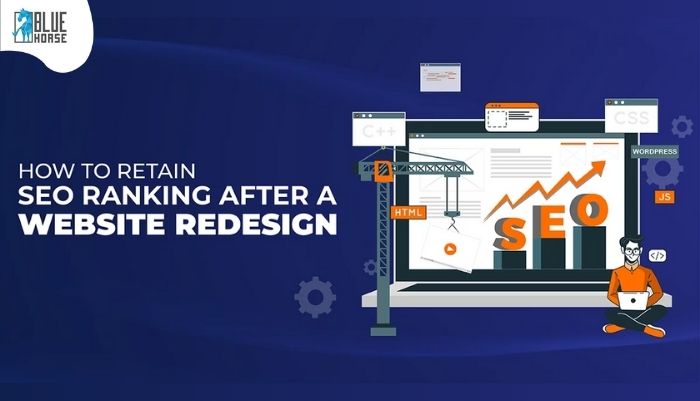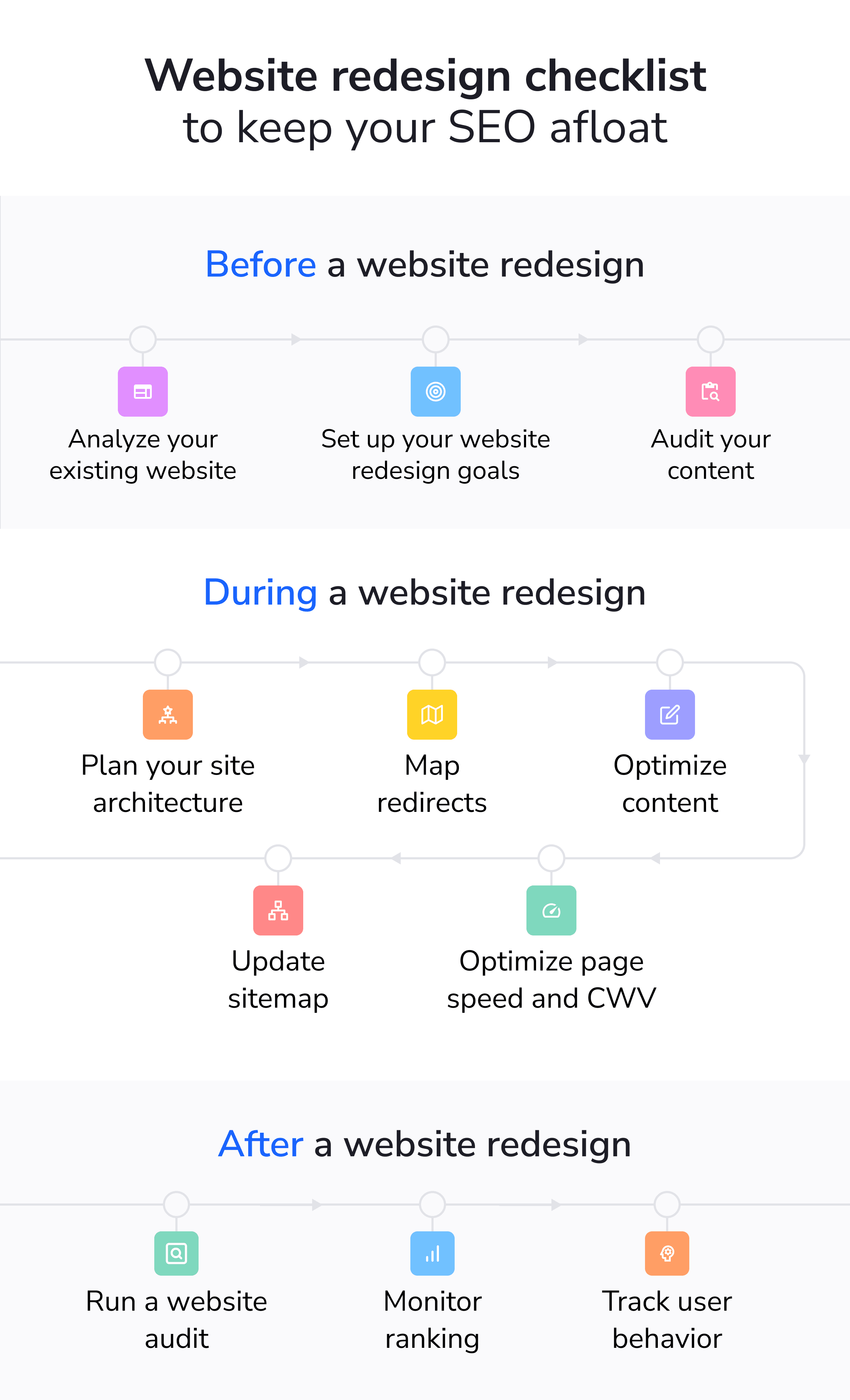How to retain SEO Rankings after a website redesign?

A website redesign is an exciting endeavor that can enhance user experience and refresh your brand's online presence. However, it can also be a daunting task for SEO practitioners, as it has the potential to disrupt hard-earned search engine rankings and organic traffic. To ensure a successful redesign without compromising SEO, it is essential to adopt a strategic approach and implement best practices. In this guide, we will explore valuable tips and strategies to preserve your SEO rankings during a website redesign.

1. Conduct a Comprehensive Site Audit: Before embarking on the redesign process, conduct a thorough audit of your current website's SEO performance. Analyze key metrics such as organic traffic, keyword rankings, bounce rates, and user engagement. Tools like Google Search Console, Moz, and Ahrefs can provide valuable insights. This audit will help identify the pages that are performing well and those that need improvement.
2. Prioritize High-Performing Content: Inventory your high-performing content, which includes pages driving significant traffic, generating leads, or generating sales. This content should be the focal point during the redesign. Ensure it is preserved and improved to maintain its SEO value.
3. Define Clear SEO Goals: Establish specific SEO goals for the website redesign. Determine whether you want to improve search rankings, increase organic traffic, target new keywords, or enhance user engagement. Well-defined objectives will serve as a roadmap for your redesign strategy, aligning design decisions with SEO requirements.
4. Optimize Existing Content: If you decide to keep existing content, optimize it for SEO before migrating to the redesigned site. Update and refresh the content to ensure it remains relevant, informative, and keyword-rich. Utilize Google Search Console to gauge how your content is performing in search results and make improvements accordingly.
5. Implement Proper 301 Redirects: Changing URLs during the redesign can lead to broken links and negatively impact your SEO rankings. Implement 301 redirects to guide search engines to the new URLs, preserving the link equity and authority of the
old pages. This is critical for maintaining SEO rankings and ensuring a seamless user experience.
6. Update Site Architecture and XML Sitemap: Significant changes to your website's structure during the redesign require an update to your sitemap. Ensure search engines can understand the new structure and easily index your pages. Additionally, update your XML sitemap to include all new pages and URLs to facilitate better crawlability.
7. Optimize Page Speed: Page speed is a crucial ranking factor for search engines. Slow-loading websites can adversely affect user experience and SEO performance. Use tools like Google PageSpeed Insights to evaluate your website's speed and identify areas for improvement, such as image optimization, caching, and server response times.
8. Rigorous Testing Before and After Redesign: Before launching the redesigned site, perform extensive testing on a staging environment. This allows you to identify and resolve any SEO-related issues before the new site goes live. After launch, continue testing and monitoring to ensure optimal performance and SEO preservation.
9. Fresh Content and Building Backlinks: Maintain a consistent content update schedule to signal to search engines that your site is active and relevant. Publish fresh and valuable content regularly to improve SEO rankings. Additionally, focus on building high-quality backlinks from reputable sources to enhance your website's authority and credibility.
10. Regular Monitoring of SEO Performance: Keep a close eye on your website's SEO performance after the redesign. Regularly monitor keyword rankings, organic traffic, and other metrics to identify any changes and promptly address any potential issues. While following these strategies can help preserve your SEO rankings during a website redesign, it's essential to understand that there are no guarantees. Search engine algorithms are constantly evolving, and unforeseen challenges may arise.Thus, maintaining a proactive and adaptive approach to SEO is crucial for long-term success.

Additional Tips for Maintaining SEO Rankings During a Website Redesign:
- Utilize a Staging Site for Testing: Before launching your redesigned website to the public, utilize a staging site for testing. This allows you to conduct thorough checks and identify any potential SEO issues before they impact your live site. Testing in a controlled environment ensures a smoother transition and reduces the risk of SEO setbacks.
- Keep Your Website's Content Fresh and Up-to-Date: Consistently updating and refreshing your website's content is vital for maintaining your rankings in search results. Search engines favor websites that provide relevant and valuable information to users. Regularly publish new and engaging content to signal your site's ongoing relevance and authority to search engines.
- Build High-Quality Backlinks: Building backlinks from reputable and relevant sources is a powerful signal to search engines that your website is authoritative and trustworthy. Focus on acquiring high-quality backlinks that align with your content and industry. Backlinks can significantly boost your SEO rankings and enhance your site's credibility.
- Regularly Monitor Your Website's SEO Performance: Stay vigilant by monitoring your website's SEO performance regularly. Keep track of keyword rankings, organic traffic, user engagement, and other relevant metrics. Regular monitoring allows you to identify any fluctuations or declines in rankings promptly, enabling you to take corrective actions if necessary.
By implementing these additional tips alongside the core strategies mentioned earlier, you can fortify your website redesign process and safeguard your SEO rankings effectively. Remember that continuous effort and adaptation are essential to achieving sustained success in search engine rankings.
In conclusion, a website redesign presents a valuable chance to enhance both aesthetics and SEO performance. Prioritize SEO considerations throughout the process, from conducting a thorough site audit to optimizing existing content, setting up proper redirects, and improving page speed. Embrace this opportunity to create a well-optimized site that not only looks impressive but also maintains and potentially boosts its search engine rankings. By combining aesthetics and SEO, you can breathe new life into your online presence and achieve long-lasting success.
For any technical assistance during your website redesign, consider reaching out to the BlueHorse Software Team to ensure a smooth and SEO-friendly redesign process.





















Comments